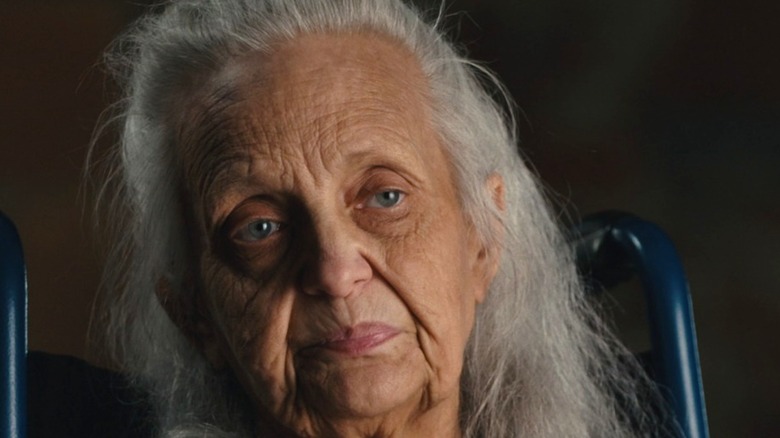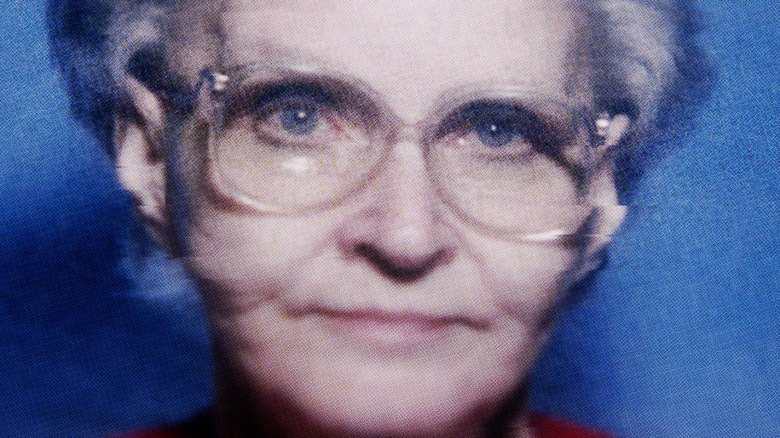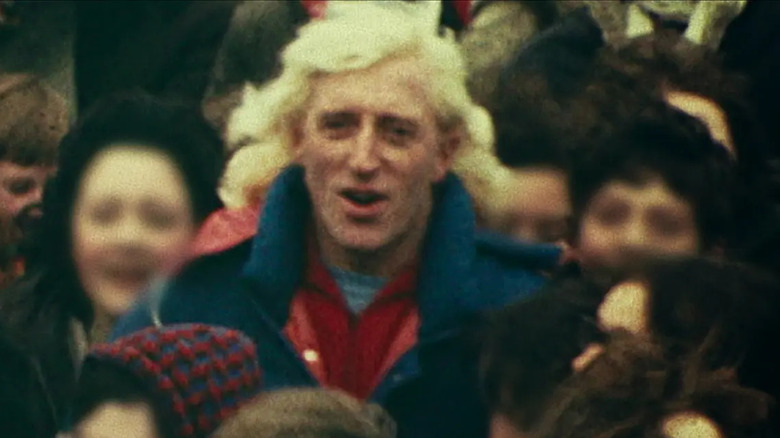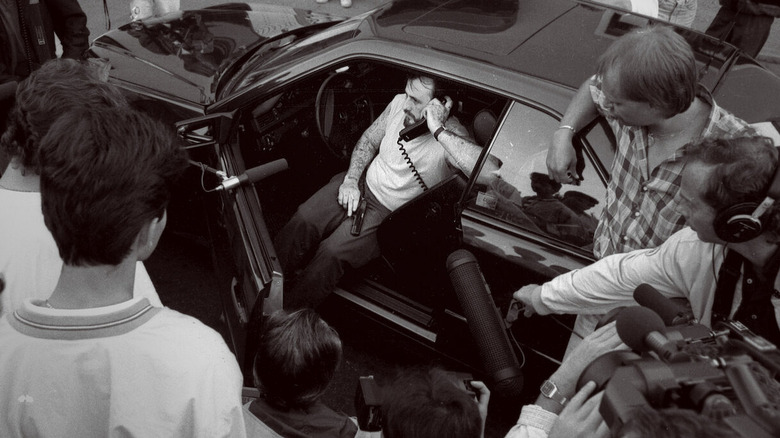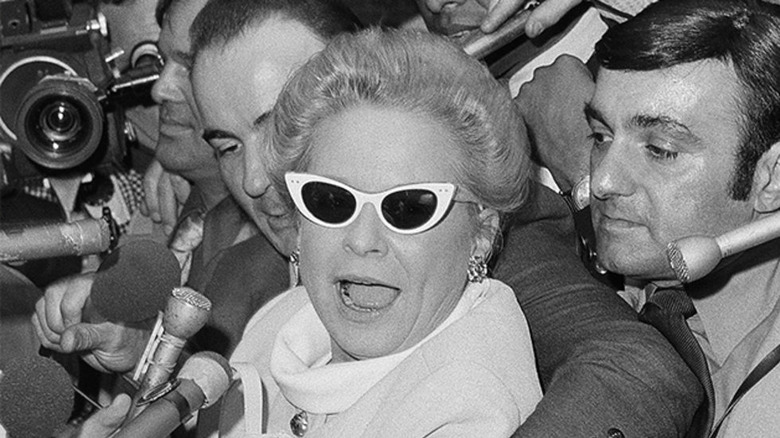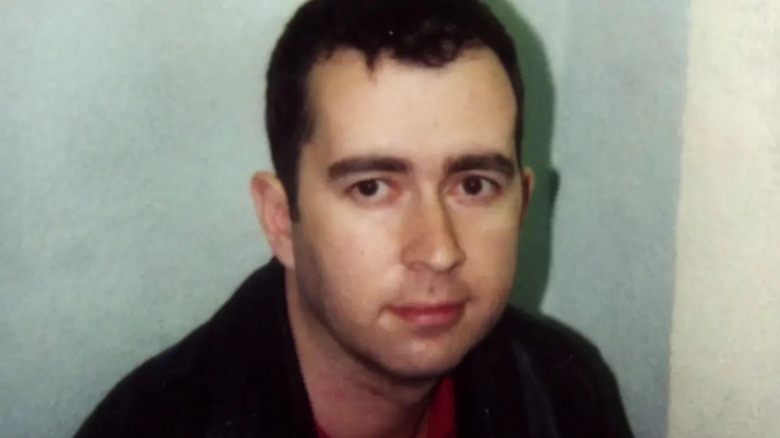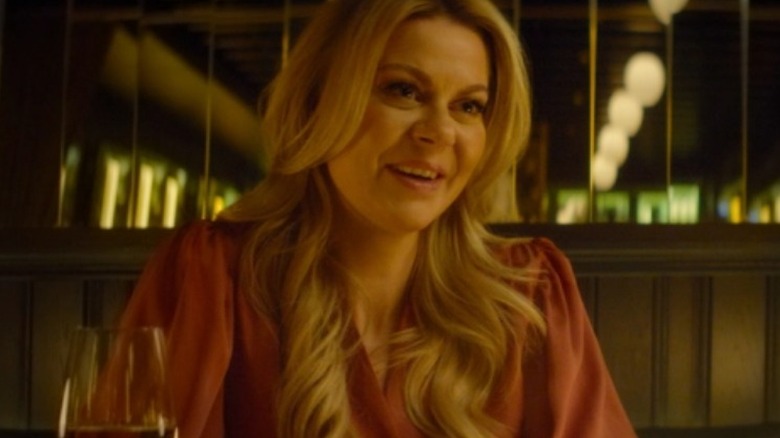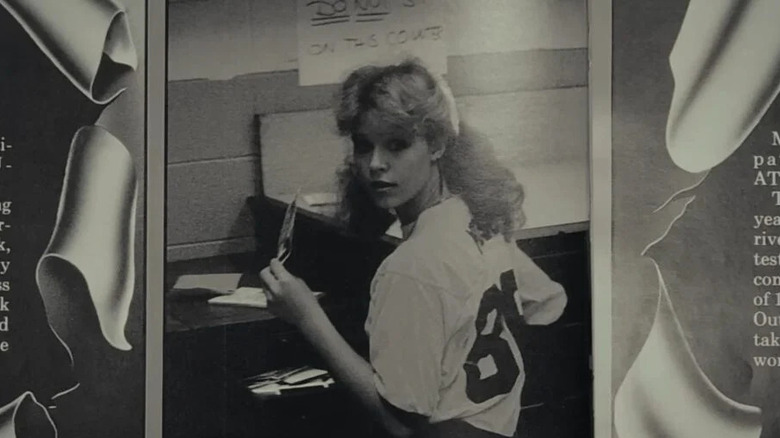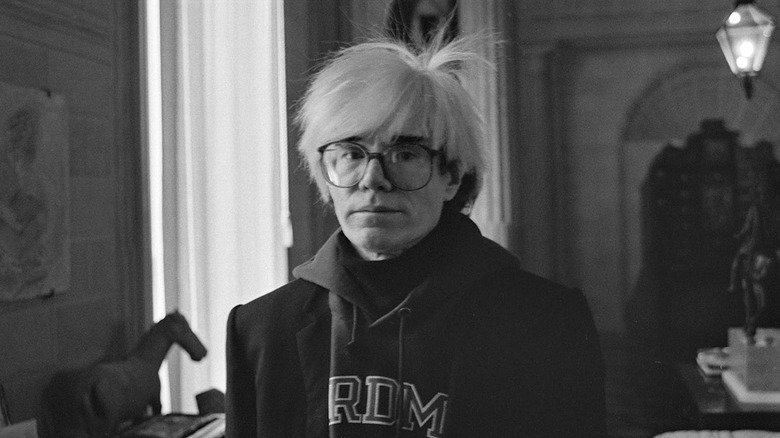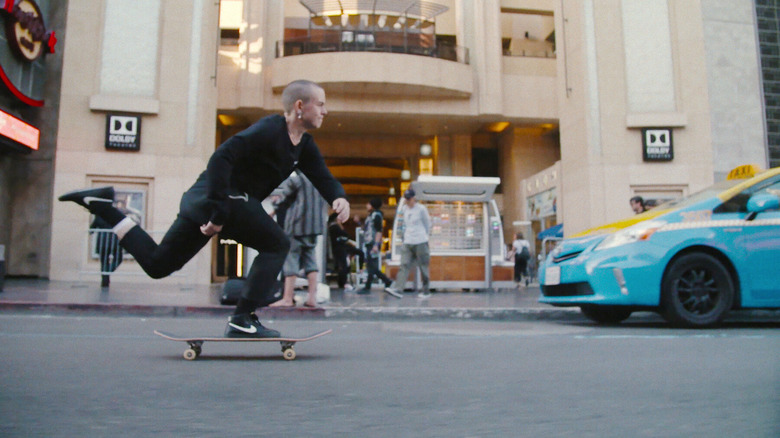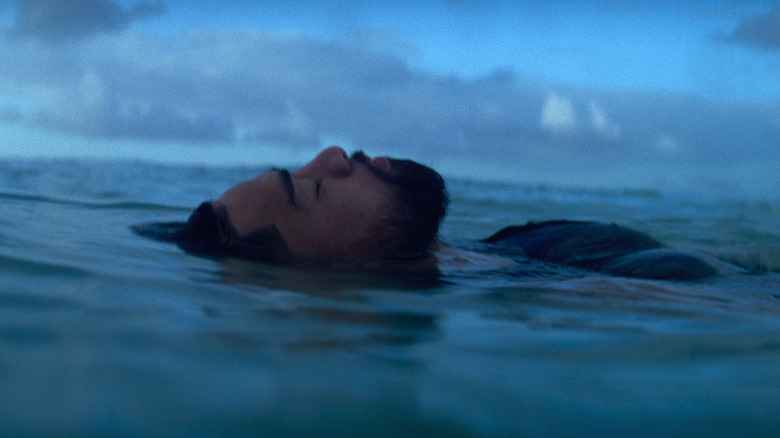The Best Netflix Documentaries Of 2022
The following article includes mentions of child abuse and sexual assault.
Every year, Netflix debuts a slam-dunk list of documentaries. In the wake of successful true-crime productions like "Evil Genius" and "Conversations With a Killer," 2022 was an excellent year for the streaming titan — as it produced its most dynamic documentary films yet.
On top of a solid year of Netflix original films, Netflix raised the bar even higher for its documentaries, cementing the streamer as the undisputed king of non-fiction. Whether packed into one two-hour film or spread across multiple episodes, each non-fiction installment released in 2022 had captivating stories full of joyful self-discovery and bone-chilling terror. As Netflix has often shown, the most memorable horrors hide in plain sight.
With another stellar year of true-crime and sports history under its belt, 2023 will likely be another prize-winning chapter for Netflix. In the meantime, let's reflect on the biggest highlights of the last 12 months. From serial killer roommates to gender euphoria in skateboarding to a fake girlfriend's death, here are the best Netflix documentaries of 2022.
Worst Roommate Ever
Produced by Horror company Blumhouse, "Worst Roommate Ever" focuses on four equally sinister stories about roommates who are killers or fraudulent schemers. The stories are terrifying in uniquely disastrous ways. But what makes "Worst Roommate Ever" such a memorable documentary is how it taps into the common fear of putting safety and trust in the hands of strangers. The documentary predates the phenomena and buzz around Netflix's "Dahmer," which played up the anxiety and dread of living near a violent person.
The cases involve Dorothea Puente, K.C. Joy, Youssef Khater, and Jamison Bachman, who immediately become the scariest people you've never met. Puente, coined the "Death House Landlady" by newspapers, ran a boarding house and murdered numerous elderly and people with disabilities in the 1980s. Joy murdered an army veteran and student who happened to be his roommate, while Khater, an athlete, performed violent attacks on strangers while committing extensive global fraud.
The biggest case covered here is Bachman's, the "serial squatter," who was a dangerous con man. He used his charm to root his way into numerous homes. Many of his former "roommates" speak about their dark past with Bachman. Hearing them recount how difficult it was to remove him from their property will leave you on the edge of your seat — and likely keep you up at night.
If you or a loved one has experienced a hate crime, contact the VictimConnect Hotline by phone at 1-855-4-VICTIM or by chat for more information or assistance in locating services to help. If you or a loved one are in immediate danger, call 911.
Jimmy Savile: A British Horror Story
For years, Jimmy Savile was a legend in the United Kingdom. He was a local DJ and radio personality, working with BBC, hosting episodes of "Top of the Pops," and well-known for his charity work throughout his life. The Guardian once touted him as a "prodigious philanthropist." After Savile died in 2011, hundreds of allegations of sexual abuse came out against him, with the number of cases putting him among Great Britain's most prolific and insidious sex offenders.
"Jimmy Savile: A British Horror Story" focuses on Savile's life and career while attempting to paint a portrait of his history of sexual abuse — all in the hopes of getting to the root of how a monstrous figure could hide his crimes. Maybe the most disturbing part of the documentary comes when we learn Savile used his charity work at Broadmoor Psychiatric Hospital to get access to the vulnerable patients receiving treatment there.
In 2007, Savile faced questioning about some of the cases leveled against him but was exonerated. It wasn't until he died as a "national treasure" that the rest of the story came to light and destroyed his legacy. "Jimmy Savile: A British Horror Story" is a deft probing of power dynamics and how elitists will protect each other — even in the event of despicable crimes.
If you or anyone you know has been a victim of sexual assault, help is available. Visit the Rape, Abuse & Incest National Network website or contact RAINN's National Helpline at 1-800-656-HOPE (4673).
Gladbeck: The Hostage Crisis
True-crime documentary "Gladbeck: The Hostage Crisis" is interesting as there's little commentary throughout its runtime. Showrunner Volker Heise elects to guide the audience through 90 minutes of archival footage rather than interview anyone for outside input. The result is an uneven yet grueling portrayal of a hostage crisis that resulted in the deaths of three people.
The story, which begins with a bank robbery in West Germany, may feel very reminiscent of "Dog Day Afternoon" — even though the hostage crisis occurred 10 years after Sidney Lumet's feature film. However, the robbery quickly turns into a long, disastrous turn of police chases, press conferences, and a rampantly damaging media circus. Without any commentary, audiences must form their own opinions about the events. However, the problem is that documentaries are meant to give viewers a wide range of information on the events they're covering.
In "Gladbeck: The Hostage Crisis," the only commentary comes from the newscasts that aired amidst the robbery and hostage-taking. There isn't much retrospect mulled on about the fallout afterward, which included local journalists exploiting the hostages by conducting interviews and having photoshoots. Of course, Heise set out to make a documentary that was not a retelling of the events but a bare-knuckled presentation of everything that occurred. The ordeal lasted about 54 hours, which doesn't easily translate into a short documentary.
Downfall: The Case Against Boeing
While several Netflix documentaries focus on true-crime, Rory Kennedy's "Downfall: The Case Against Boeing" instead looks at a preventable disaster. Through interviews and archival footage, "Downfall" is Kennedy's attempt at understanding why the Boeing aircraft manufacturing company was responsible for two crashes, Lion Air Flight 610 and Ethiopian Airlines Flight 302, occurring within six months of each other.
If you're an aviation junkie, "Downfall" is a solid 90-minute watch. If you know nothing about airplanes, you'll likely still get something out of it, as it's one of Netflix's most accessible and cohesive documentaries of 2022. The thesis of "Downfall" investigates how Boeing neglected component failures within the 737 MAX aircraft due to the stress of competing with Airbus. Both crashes had no survivors: Each flight killed over 150 people. While the documentary focuses more on why the crashes happened, it's hard to look beyond the mass casualties that haunt the Boeing name.
Keep Sweet: Pray and Obey
Directed by Rachel Dretzin and Grace McNally, "Keep Sweet: Pray and Obey" taps into the part of the true-crime genre that's centered around religious extremism. "Keep Sweet" focuses on the Fundamentalist Church of Jesus Christ of Latter-Day Saints. Capitalizing on the contemporary popularity of TLC's "Sister Wives" and journalist Sally Denton's book "The Colony," "Keep Sweet" tracks a Mormon sect that practices polygamy. Journalist Mike Watkiss interviews several of the sect's survivors about "ultimate prophet" leader Warren Jeffs' systematic abuse of power.
After its inception, the FLDS became categorized as a hate group by the Southern Poverty Law Center, with Jeffs' indoctrinating views on marginalized people leading to the denouncement of the FLDS as a "white supremacist, homophobic, antigovernment, totalitarian cult." As presented in the documentary, his manipulations turned into money, greed, and sex crimes. He is currently serving life in prison for sexually assaulting a child. "Keep Sweet" can be a difficult watch, but a lot of it is essential viewing for anyone interested in the horrific secrets of religious cults.
If you or a loved one has experienced a hate crime, contact the VictimConnect Hotline by phone at 1-855-4-VICTIM or by chat for more information or assistance in locating services to help. If you or a loved one are in immediate danger, call 911.
If you or someone you know may be the victim of child abuse, please contact the Childhelp National Child Abuse Hotline at 1-800-4-A-Child (1-800-422-4453) or contact their live chat services.
The Martha Mitchell Effect
Directed by Anne Alvergue and Debra McClutchy, "The Martha Mitchell Effect" is a must-see political documentary about the lengths corrupt administrations will go to silence their opposition. Medically, the Martha Mitchell effect is when medical professionals misdiagnose perceptions as delusions.
The medical term received its name from the tragic story of Martha Mitchell, the wife of John Mitchell and Richard Nixon's attorney general. She divulged that officials in the White House were committing illegal and treasonous acts, and they wrote her off as delusional. But the documentary focuses on how the Watergate scandal turned her into a vindicated hero.
Her corruption claims against top-ranking officials were correct — even though the Nixon administration attempted to gaslight her into keeping quiet. The documentary tops Julia Roberts' portrayal of Mitchell in the Starz 2022 limited series "Gaslit," as this showcases her compelling and wonderful socialite life beyond the Nixon administration's malignant manipulations, which included holding her hostage and drugging her to prevent anything leaking to the press.
The Puppet Master: Hunting the Ultimate Conman
In one of Netflix's most detailed documentaries of the year, buckle up to watch "The Puppet Master: Hunting the Ultimate Conman," the story of British conman Robert Hendy-Freegard unfolds. Told over three parts, showrunners Sam Benstead and Gareth Johnson shed light on the cruelty of Hendy-Freegard, who posed as an MI5 agent to steal money from innocent families.
To gain favor with, and extort money from, his victims, Hendy-Freegard imposed mental stress by coercing them into believing that the IRA wanted to assassinate them. The families would have to cut ties with loved ones and friends to meet his demands.
"The Puppet Master" leaves no sympathy for Hendy-Freegard, as Benstead and Johnson detail how the conman was caught, and how the families he destroyed attempted to put the pieces of their lives back together after the fallout. The documentary is grueling, gripping, and tragic. "The Puppet Master" delivers worthwhile suspense, even if it is a run-of-the-mill true-crime thriller.
The Tinder Swindler
Despite clocking in at nearly two hours, "The Tinder Swindler" is Netflix's most concise documentary of the year. Much like "The Puppet Master," "The Tinder Swindler" focuses on the manipulations of a conman. However, this documentary is about Simon Leviev, the self-proclaimed "Diamond King" and lavish socialite who coerced people on the Tinder dating app to give him money. In conversations, Leviev claimed he needed funds to escape his enemies in Israel. However, those "needs" were for materialistic purposes.
Leviev concocted an improbable Ponzi scheme, where he'd con women by taking them out on expensive dates using whatever money he took from other women beforehand. It's a deep, layered business of crime, which included forging bank transfers and ghosting conversations. When it was all said and done, Leviev reportedly conned over $10 million out of his victims (via Forbes).
As the documentary's tagline expresses, "Modern love is a dangerous game." Joining terrifying tales behind Craigslist and Uber, "The Tinder Swindler" will make everyone second-guess how they engage with others on dating apps.
Girl in the Picture
Far and away, Netflix's most horrific documentary of 2022 is "Girl in the Picture." Directed by Skye Borgman and based on the books "A Beautiful Child" and "Finding Sharon" by Matt Birkbeck, "Girl in the Picture" is a layered, emotional story focusing on the abduction of Sharon Marshall.
Initially, it seems like the documentary will focus on the kidnapping of six-year-old Michael Hughes, the son of Marshall. But quickly, it becomes Marshall's story. Marshall, who died in a 1990 hit-and-run in Oklahoma, was married to FBI fugitive Franklin Delano Floyd and worked as a sex worker while Floyd was on the run.
Before you can process that, the documentary reveals that Floyd is Marshall's father. They aren't biologically related, as Floyd abducted Marshall from her mother, whom he was married to for a short period. He sexually abused Marshall until her death. Marshall's real name was Suzanne Marie Sevakis. Until the making of the documentary, her mother never knew about her daughter's whereabouts.
"Girl in the Picture" attempts to fit an entire 30 years of crime into 100 minutes, and, for the most part, succeeds with flying colors. Borgman gracefully raises awareness of Marshall's story while painting Floyd as the menace he is. "Girl in the Picture" is a troubling, disturbing watch, but one that sees justice given to Marshall and her son, Michael.
If you or someone you know may be the victim of child abuse, please contact the Childhelp National Child Abuse Hotline at 1-800-4-A-Child (1-800-422-4453) or contact their live chat services.
If you or anyone you know has been a victim of sexual assault, help is available. Visit the Rape, Abuse & Incest National Network website or contact RAINN's National Helpline at 1-800-656-HOPE (4673).
The Andy Warhol Diaries
Though there has never been a shortage of television shows and films about artist Andy Warhol, Netflix's "The Andy Warhol Diaries" endures as a triumph through its abundance of material. Based on Warhol's nonfiction book of the same name, the documentary is a narration of the artist's diary entries. Producer Ryan Murphy and Director Andrew Rossi used AI technology to recreate Warhol's voice for the diary narrations, making "The Andy Warhol Diaries" a groundbreaking installment in the still-going chronicling of Warhol's life (via Decider).
Featuring interviews with figures like Jerry Hall, David LaChapelle, Rob Lowe, John Waters, Greg Tate, and countless others, we get a well-rounded account of a great, artistic life that ended too soon. The film starts with Warhol's life in Pittsburgh and ends with his death (due to ventricular fibrillation). The documentary is vibrant and enthralling, much like Warhol's storied career. Rossi's direction makes it, without a doubt, the best documentary about the artist to date.
In particular, the chapters about Warhol's relationship with Jean-Michel Basquiat and the love affair he had with Paramount executive Jon Gould paint a whole picture of a tremendous and complicated life. You can find any of the information displayed on-screen in a book or on a webpage somewhere, but it's much more rewarding to see all of it play out in gorgeous technicolor.
Stay on Board: The Leo Baker Story
One of Netflix's most heartwarming documentaries of 2022, "Stay on Board: The Leo Baker Story," follows Leo Baker, a trans, goofy-footed professional skateboarder. The main arc of "Stay on Board" culminates in Baker's performance at the 2020 Olympics.
Filmed across three years, the documentary focuses on the ongoing debate about transgender athletes, which has become an even more pressing topic in competitive formats. Weaving in-home video footage of Baker shredding as a kid with confessionals from the present-day, "Stay on Board" looks at Baker's process as he weighs the benefits of delaying his transition to not be scrutinized on a world level. Meanwhile, he considers what it would mean to finally have his joyous autonomy in the wake of competing passionately in the Olympics.
Yes, it's a story about skateboarding. But it's also about someone discovering their gender identity in the face of a sports culture that is not inclusive. In a year where Netflix leaned extra far into the world of true-crime, it's liberating to see a portrayal of someone discovering gender euphoria. A triumph in LGBTQ+ documentaries, "Stay on Board" is a triumph worth revisiting.
Untold: The Girlfriend Who Didn't Exist
Over the last two years, the documentary series "Untold" has put some of the best sports stories on the silver screen. From the Malice at the Palace to the Olympic career of Caitlyn Jenner to yacht racing, "Untold" goes deep into the secrets lurking behind the stories every diehard sports junkie knows and loves.
However, the best installment of the series came with "The Girlfriend Who Didn't Exist," which focuses on the life, career, and humiliation of All-American Notre Dame linebacker Manti Te'o. In 2012, during his senior season, Te'o was the victim of a high-profile catfishing scheme by Naya Tuiasosopo, who created a fake online profile and manipulated Te'o into falling in love with her.
The story is deeply layered, as Te'o claimed that his grandmother and girlfriend both died on September 11, 2012. When Te'o became a serious Heisman Trophy candidate later in the season, the reports of his personal tragedies became highly publicized — though many questioned how he was able to continue playing through both losses without missing any games.
The hoax had gone untold by Te'o since his interview with Katie Couric in 2013. But "Untold" gave the now-retired collegiate star a chance to speak out on the scandal that disrupted his professional career. The only downside to the story is that more screen time is given to Tuiasosopo than Te'o. Still, the story is enthralling, heartbreaking, and bizarre.
